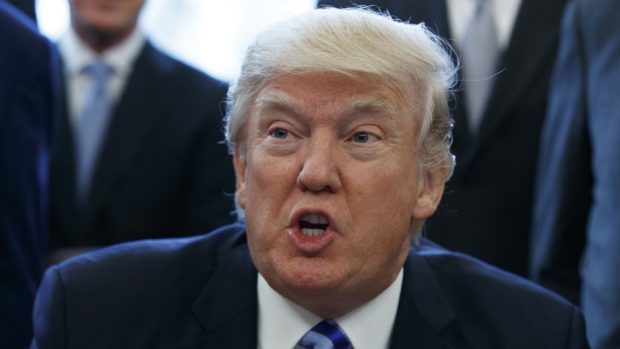Do we believe everything that we read about Donald Trump?
With Fire and Fury, the latest book describing a chaotic presidency in crisis, now hitting the bookshop shelves in the UK, it is important to consider how critical we are of information sources in regard to this controversial figure.
Do we credulously accept everything we read? Are we biased one way or another in our news sources? How far do we check the ‘facts’ presented to us?
This subject is both timely and important. The contentious nature of Donald Trump and his presidency, the on-going discussion of the impact of disinformation on the outcome of both the US election and the UK Brexit referendum, and the accusations of ‘fake news’ used by Trump to weaken the power of mainstream news critics mean that the need to investigate how people check the validity of news items is greater than ever. Social media allows a wide dissemination of news and opinion, but can also amplify misinformation and give it equal status with the truth.
The problem is increased by the attacks on the mainstream news media by Trump. For Trump, ‘fake news’ does not necessarily imply misinformation or inaccuracy, but simply news with which he disagrees.
Even the most media savvy of readers now finds it difficult to clearly distinguish between the various types of mis- and dis-information, including satire and parody, that can be found online, particularly on the subject of Trump.
So how carefully do we check our news sources about Trump?
Does the need for titillation or to confirm our bias ‘trump’ the need to ensure that what we read is true?
Recent research published by myself and Professor Simon Burnett in Digital Journalism investigated a group of female users of the online discussion forum Mumsnet and their daily discussions of Donald Trump.
Starting in the days after Trump’s inauguration and continuing to the present day, these users have run a series of fast-moving discussion threads on the subject of Trump and his presidency. The majority of the posts on the threads share news sources with the other participants – with links to sources from across the world, including Australian newspapers, the official statements of US senators, opinion pieces from across the political spectrum and, of course, the tweets of Trump himself.
What we found was a slick and careful operation of crowd-sourcing, checking and counter-checking news sources. Each source was discussed carefully, with any weakness or potential bias pointed out.
Participants would then attempt to find other sources that either supported or disproved a news item. Our study has certainly suggested that there was no blind acceptance of the truth of a particular source or viewpoint amongst these news users, but rather a determination of weigh up the validity of each source and to search for other evidence for or against its arguments.
This all sounds very positive. Access to a wide variety of news sources via the Internet allows those with the interest and time to check and compare sources to assure themselves of the validity of the news they read.
However, we also became aware that our Mumsnetters were happily biased in their news collection. Sources that criticised Trump were praised and shared, while those that were more positive about the President were criticised.
This was not necessarily a ‘liberal bubble’. It was clear that our participants sourced their news from both the left and right-wing press. Indeed, stories in the right-wing press that criticised Trump were particularly celebrated and shared. While mainstream media sources were preferred, other less verified sources might also be used if they took a critical view of the President or his appointees.
There is a growing concern in both academia and the media about so-called “echo chambers” or “bubbles” within which individuals expose themselves only to information that reinforces their existing views.
What our study has found is that such bubbles can be constructed, even by those who are careful in their checking and re-checking of sources. It is possible to collect thousands of different sources but still only read news that supports your viewpoint.
